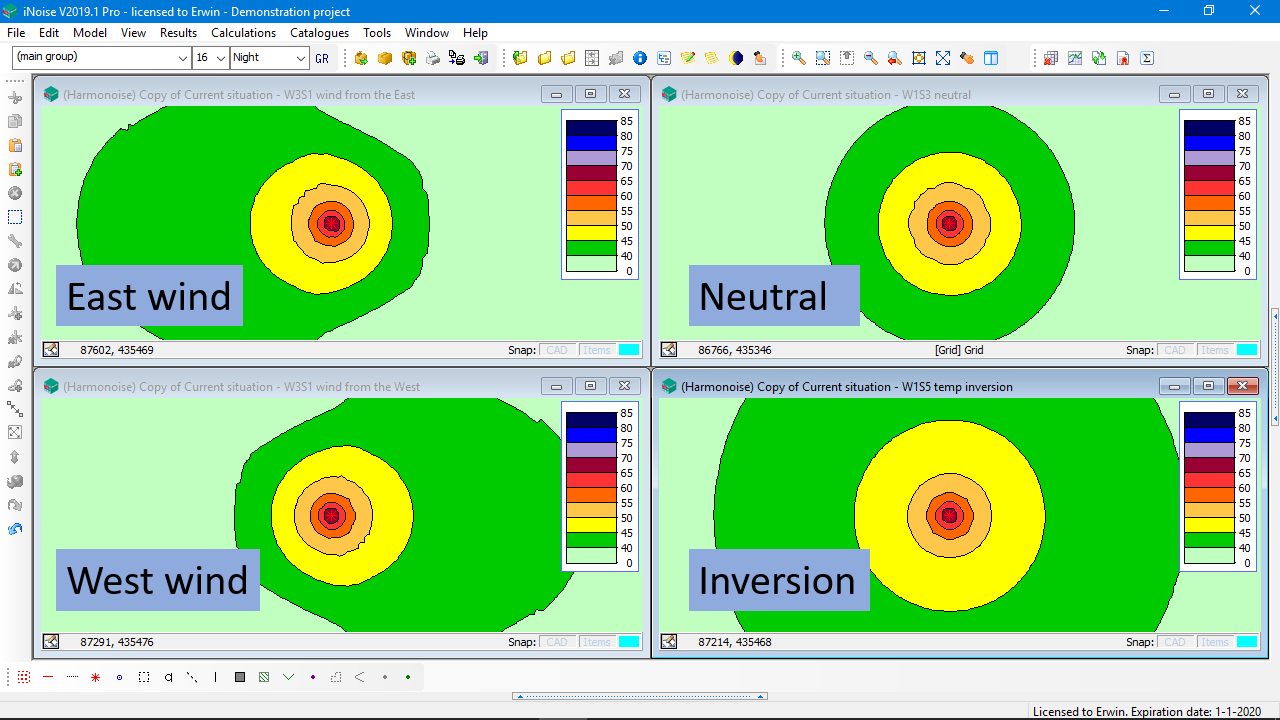New version iNoise 2019.1 released, now with Harmonoise method!
View the Harmonoise method description WP3_HART32TR-040922-DGMR20.PDF
Validating calculations by comparing them with measurements is not a straight forward task. Next to issues such as avoiding background noise and knowing the operation conditions of the sources during the measurements, the main problem is the meteorological condition. Empirical calculation methods such as the ISO 9613 calculation method cannot calculate under up wind, side wind or inversion conditions.
This is why we have implemented Harmonoise in iNoise. The Harmonoise method is a more theoretical method, like Nordic 2000 and ENM, that can calculate for specific meteo conditions. With Harmonoise you can define the wind direction, wind speed and stability class as it was during the measurement. In this way a much better validation of your calculation model can be achieved.
The Harmonoise method has been developed within an European working group for road and rail traffic. However the point to point calculation algorithms can also be used for industrial noise. The aim was to develop an advanced and state of the art European method for noise calculations that can be used for detailed calculations as well as for strategic noise maps. The Harmonoise method was finalized in 2005. However the European commission decided not to include Harmonoise in European legislation. The main reason was that they expected much longer calculation times and that this could lead to higher costs for the member states when used for the obligated European strategic noise maps. Now with iNoise 2019.1 you can use this advanced method next to the ISO 9613 method!

